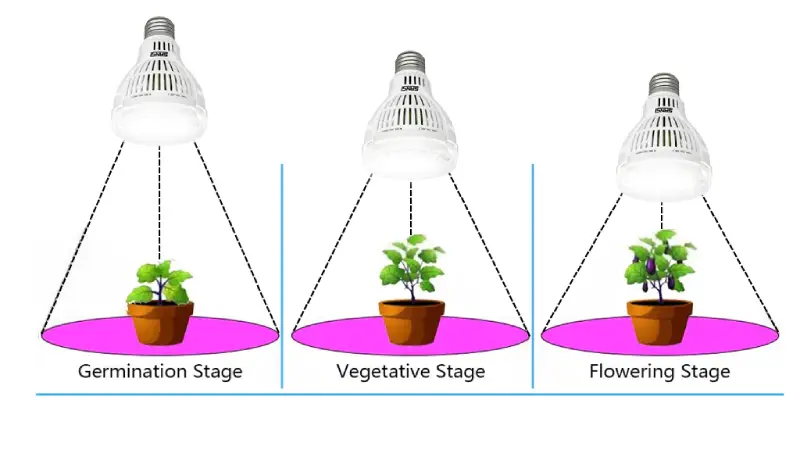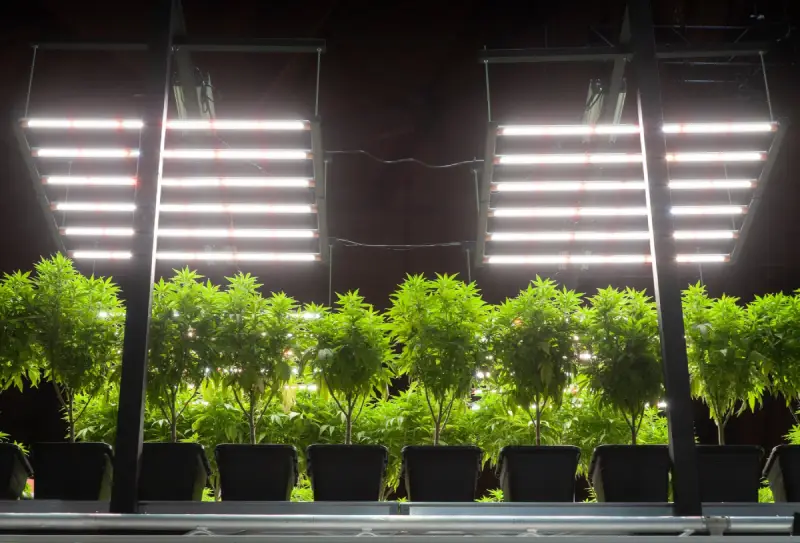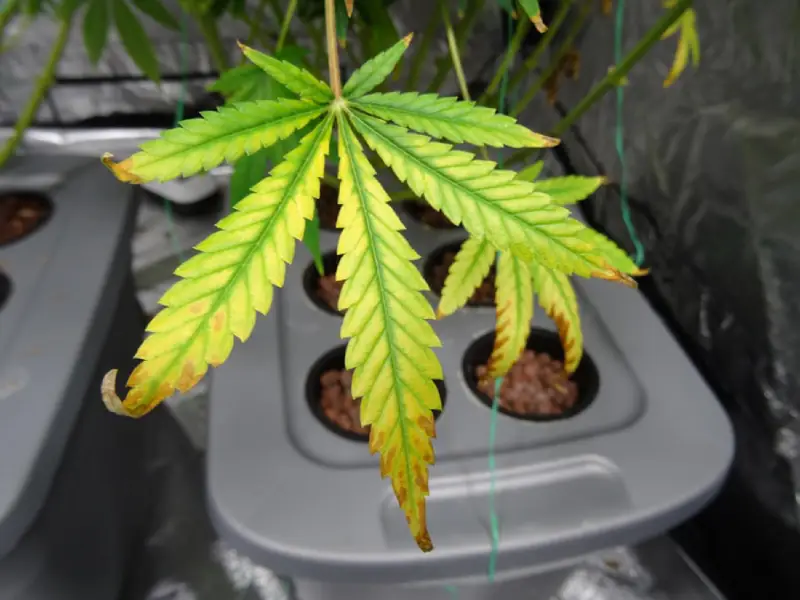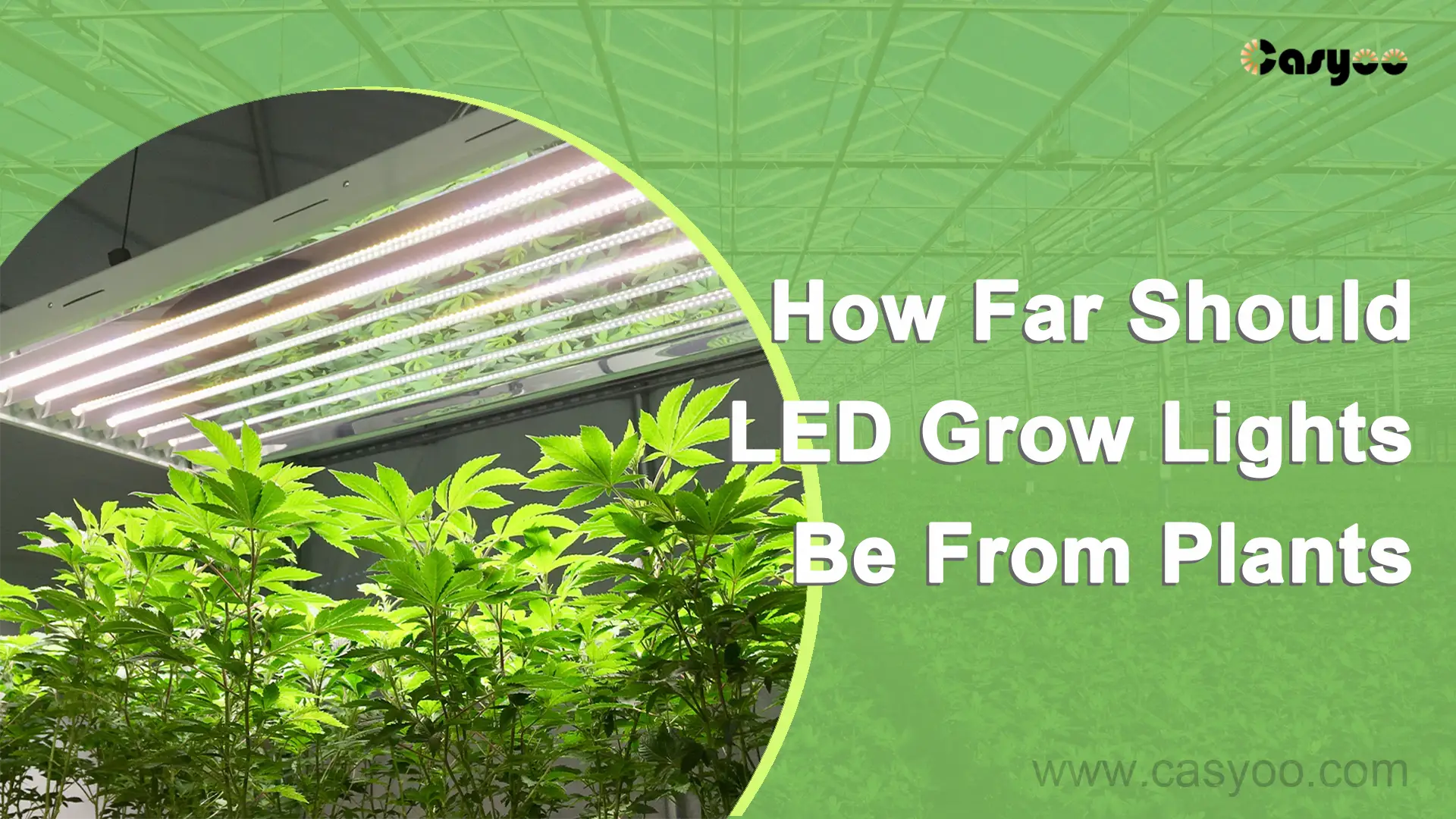LED grow lighting is becoming widely used as an artificial lighting source for plants as plant growing gains popularity. But one very important thing that growers need to consider is how far should LED grow lights be from plants. Maintaining proper LED grow light placement is essential for healthy development and maximizing plant growth. We will examine the ideal grow lighting distance in this post, taking into account variables like light intensity and plant’s growth stage.
What Are the Factors that Affect the Distance between LED Grow Lights And Plants?
There are a few things to think about when figuring out the ideal grow light distance. The hanging height, sometimes referred to as the mounting height, plays a key role in the development of plants. The following factors should be taken into account when figuring out the optimal distance between your lights and plants:
Plant Stage

When adjusting the optimal LED grow light distance, it is important to take the plant’s stage of growth into account. Different light intensities are needed at different stages of plant growth.
How Close Should LED Grow Lights Be to Seedlings?
A seedling will never grow to its full potential in dry soil. So at the start of the growth period, you should position your LED lights higher above the canopy. Although it may occasionally be tempting to expose newborn seedlings to brief bursts of intense light to promote quick growth, this is not advised! Growers need to exercise caution to get the best results. Keep in mind that light intensity shouldn’t be increased until the plant has matured from the seedling stage.
General speaking, LED grow lights should be put 24–36 inches above the seedlings as the optimal grow light distance from seedlings. The wattage of the source still affects the light’s distance, though. At the beginning, 36 inches away from seedlings is advised to keep heat and light intensity down and avoid drying them out. Within 2-3 weeks after the roots have taken hold and sprouting has started, the lights can be adjusted closer.
Vegetative Stage
The light spectrum for the vegetative stage should stay the same as in the seedlings stage. Increasing the light intensity is necessary to make sure the plants photosynthesize correctly and deliver healthy crops. During the vegetative phase, LED grow lights should normally be placed 12-24 inches above the canopy.
Flowering Stage
Plants need the maximum amount of light intensity at this stage of their life cycle to sustain stem growth and blooming. To do this, LED lights need to be positioned closer to the crops.
You should progressively move your LEDs closer to the plants in order to attain the best yields. To get the best possible grow light distance, you will need to gradually reduce the light distance.
The recommended grow light distance is 18-24 inches away from the light source. Plants reach their maximum height and fruit during this time. You don’t need to adjust the distance during flowering, especially if you don’t want taller plants.
Light Intensity
Light intensities from various LED grow lights vary and are expressed in PPFD or PAR. Lower light intensity may allow the lights to be hung closer to the plants, but higher light intensity needs the lights to be hung farther away from the plants to prevent heat stress or light burn. In order to identify the proper hanging height for your lights based on their intensity, it is imperative to adhere to the manufacturer’s instructions.
Plant Species
The optimal distance also depends on the kind of plants being cultivated. Different plant species may tolerate different amounts of heat and light, and they may also have different light requirements. For instance, robust plants may be able to withstand lights hung closer, but sensitive plants may need the LED grow lights to be hung farther away to avoid light burn. It’s critical to ascertain the precise amount of light needed for the plant type and to adjust the led grow light height above plants appropriately. Below is a quick-reference table to help you optimize placement for common crops:
|
Plant Type |
Seedling Stage |
Vegetative Stage |
Flowering/Fruiting Stage |
|
Leafy Greens (e.g., Lettuce, Spinach) |
24–30 inches |
18–24 inches |
12–18 inches |
|
Herbs (e.g., Basil, Parsley) |
24–30 inches |
12–18 inches |
10–12 inches |
|
Tomatoes/Peppers |
24–36 inches |
18–24 inches |
12–18 inches |
|
Flowering Plants (e.g., Roses, Cannabis) |
30–36 inches |
24–30 inches |
12–24 inches |
Light Coverage Area

Light coverage area matters, too. To guarantee that the light is distributed evenly among all the plants, LED grow lights may need to be mounted higher if their coverage area are bigger. On the other hand, in limited coverage areas, lower-hung lights allow for improved light penetration.
Light Distribution
Another thing to think about is how LED grow lights distribute their light. While some LEDs have a wider beam angle for an even distribution of light, others have a focused, spotlight-like pattern. The optimal distance from plants might vary depending on the type of light distribution. While lights with a wider beam angle may be able to be hung lower, lights with a more focused beam may need to be put higher in order to cover a bigger area.
Heat Output
Too much heat can harm plants. For this reason, when figuring out the ideal grow light distance, one must take into account the heat output of grow lights. To avoid heat stress, lights with higher heat output might need to be put higher, while lights with lower heat output could need to be put closer to the plants. To prevent any heat-related damage, it’s critical to use LED grow lights with effective heat dissipation systems. And don’t forget to keep an eye on the surrounding temperature of the plants.
What Are the Signs that Your Light Is Too close to Your Plants?

While healthy growth requires rising light intensity throughout a plant’s life, you must closely monitor your plants to make sure you haven’t lowered the LED lights too soon. Keep an eye out for these warning signs of distress:
- Stunted or irregular growth: Typically marked by curly, dropping leaves.
- Bleaching: Usually manifested as yellow or white spots on the uppermost leaves.
- Grow light burn leaves: The leaves closest to the light usually have tiny brown edges. Remember that sometimes what appears to be a small burn could be a burn from nutrients.
What Are the Signs that Your Light Is Too Far from Your Plants?
If you leave your lights too far away from your plants, they will appear lanky and feeble, which can cause color loss and eventual death. It can be easy to confuse the symptoms of underlighting with accelerated growth at times since the plants that lack of light will grow upward at a higher pace. Etiolation is the term for this process, and it is not encouraging.
Final Thoughts
In conclusion, the grow light distance varies based on the plant’s growth stage, intensity, coverage area and so on. The point is striking the ideal balance between preventing light burn and offering enough light for optimal plant growth. The best distance between the LED grow lights and the plants can be achieved by regularly checking the plants for symptoms of stress or damage and making the required changes as the plants grow. When in doubt, you can always get in touch with the manufacturer of your LED grow light to find out what the ideal LED grow light distance is.
At Casyoo, we pride ourselves on providing growers with state-of-the-art full-spectrum LED grow lights to enable them to set up their best-ever growing settings. We’re available 24/7 to assist you choose the best LED grow light for your plants and to answer any questions, includinga the grow light distance. Talk to us now!
Related reading:




